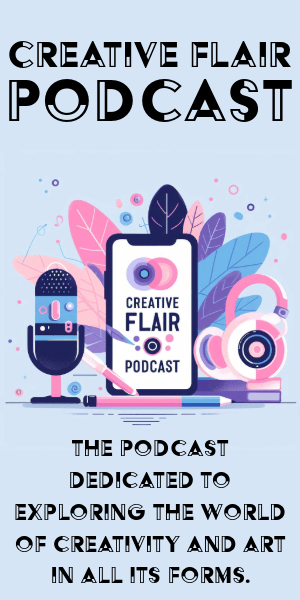Symbolism of Gold in Religious Art
Gold in religious Renaissance art symbolized divine light. In altarpieces and sacred figures, gold leaf evoked spirituality. The glow of gold, especially in candlelight, created a transcendent experience for viewers. Imagine a churchgoer seeing the Virgin Mary with a shimmering halo against gleaming gold, bringing the ethereal to earth.
Renaissance artists balanced symbolism with craft. The careful application of gold leaf to wood panels echoed reverence for religious depictions. Saints, Jesus, and the Virgin Mary seemed to glow with life beyond paint. This technique flourished in Florence and Siena, where artisans crafted stories of faith into panels.
Gold's reflective quality drew believers into deeper contemplation. As viewers moved, the light danced, changing the perception of holy figures. The spiritual story woven with golden threads connected the sacred and the viewer, bridging heaven and earth within wood and gold leaf.
Gold as a Status Symbol
During the Renaissance, gold evolved from divine symbolism to a symbol of societal prominence and power. It became a display of earthly ambition draped in luxury.
Benvenuto Cellini's Salt Cellar, commissioned by King Francis I of France, exemplified this shift. More than a table piece, it showcased the king's wealth and cultural influence. Cellini's craftsmanship elevated the object beyond utility, making it a statement of political power.
The Baroque era amplified this trend, notably in Louis XIV's court at Versailles. Gold adorned everything from palace walls to the monarch's attire, declaring authority and grandeur. The Sun King's reign became a golden chapter in history, with Versailles reflecting his supremacy across Europe.
In these instances, gold served as a display of influence, ambition, and affluence. Artists and artisans used gold's captivating qualities to elevate subjects beyond their material beginnings. As the Renaissance flowed into the Baroque, gold became a universal dialect of power, a glittering testament to human aspiration.
Techniques and Materials for Gold Application
Renaissance artists applied gold leaf with precision and reverence. The process began with preparing a seasoned poplar panel, transforming it into a luminous masterpiece.
- Coat the panel with gesso, a mixture of chalk and animal glue, creating a smooth base.
- Sketch designs in charcoal, refined by incised lines.
- Apply bole, a reddish-brown clay that enriched the gold's hue.
- Transform coins into thin gold leaf sheets, applying them with a light touch using a small brush.
- Burnish the gold with smooth stones or teeth, revealing a lustrous finish.
- Punctuate halos or borders with tiny holes, creating intricate light-catching patterns.
- Apply the final layer of tempera painting, using pigment mixed with egg yolk.
This method treated the golden ground as a stage for ethereal figures, each brushstroke a prayer in color. The skills required for this golden alchemy blended technique with instinct and inspiration. It was a meditative exercise that transcended the mundane, melding art and faith into resplendent storytelling. Through their skill, Renaissance artisans gifted the world visual hymns of light and legacy that continue to captivate us today.
Transition from Gold to Oil Paints
As the Renaissance matured, art shifted from gold-ground paintings to oil paints and canvas. This change offered artists new possibilities for expression, bridging the divine and reality.
Oil paints allowed for a vivid intricacy that gold leaf couldn't match. Artists could manipulate light and shadow with unprecedented finesse, creating depth and volume on a flat canvas. Each stroke evoked texture and emotion, capturing life's ephemerality through translucent glazes and subtle color transitions.
The versatility of oils enabled artists to rework and refine their pieces, much like sculptors shaping clay. Linear perspective, enhanced by oils, carved depth into surfaces that gold had merely adorned. This new medium shifted focus from the divine to the individual and scientific curiosity.
As oils gained prominence, gold receded to a subtle accent. It became a delicate thread in a broader mosaic, adding a whisper of the divine where necessary. In late Renaissance and Baroque paintings, gold leaf mingled with oils to enhance drapery, frame portraits, or underscore divinity within earthly scenes.
This transition didn't erase gold's radiance from art; it partnered gold with color, creating a duet rather than a solo. The shift offered artists a renewed creative voice, reflecting humanity's urge to explore, innovate, and captivate in the space between the divine and the earthly.
Gold's enduring allure in art and culture is a testament to its dual role as both a symbol of the divine and a marker of human ambition. Whether shimmering in religious altarpieces or adorning the halls of power, gold has consistently bridged the sacred and the secular, leaving an indelible mark on history. Its legacy continues to captivate, reminding us of the timeless dance between light and shadow, faith and aspiration.
- Rublack U. The Art of Renaissance Textiles. Renaissance Quarterly. 2010;63(1):1-32.
- Baxandall M. The Limewood Sculptors of Renaissance Germany. New Haven: Yale University Press; 1980.
- Nash S. Northern Renaissance Art. Oxford: Oxford University Press; 2008.






















